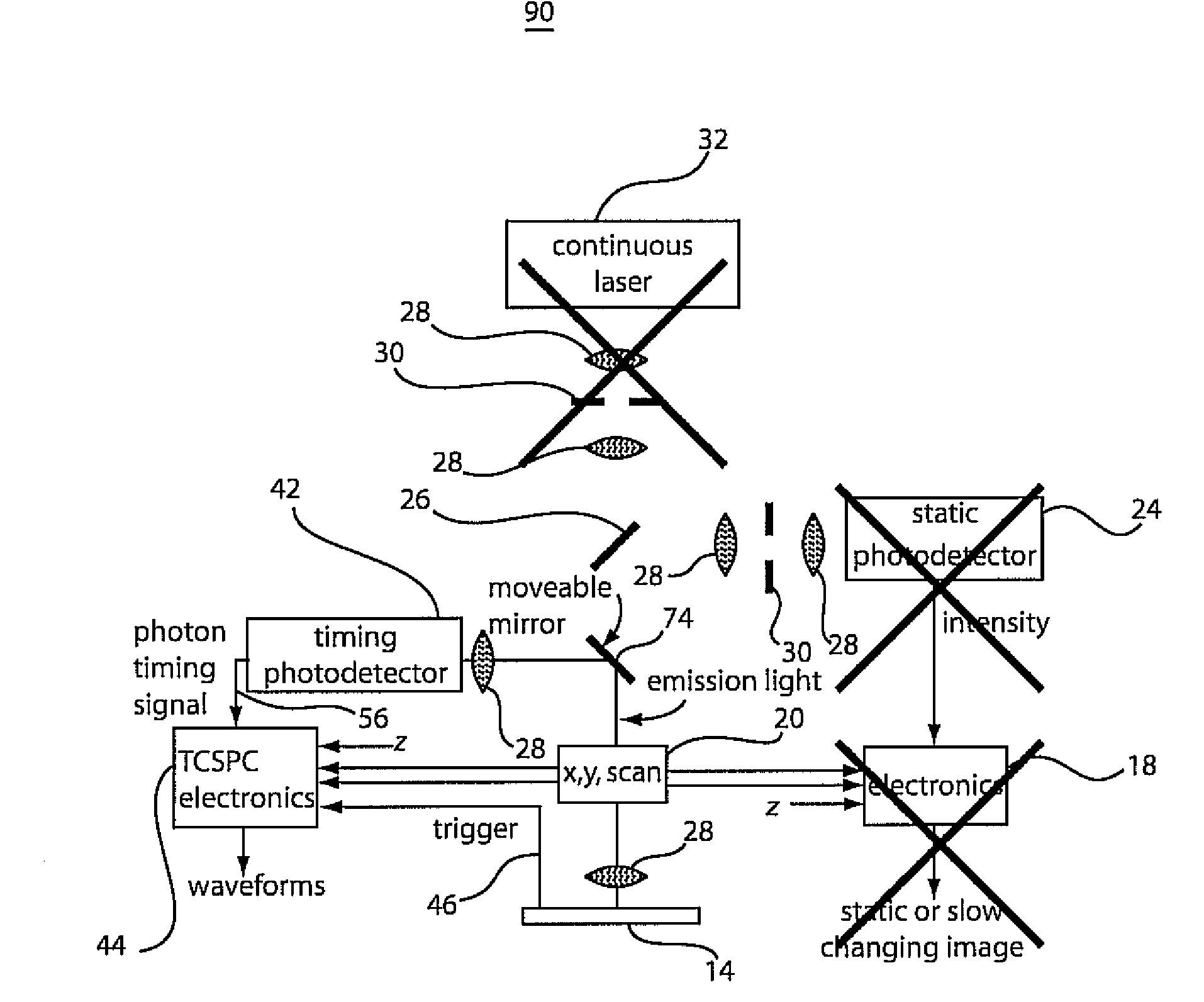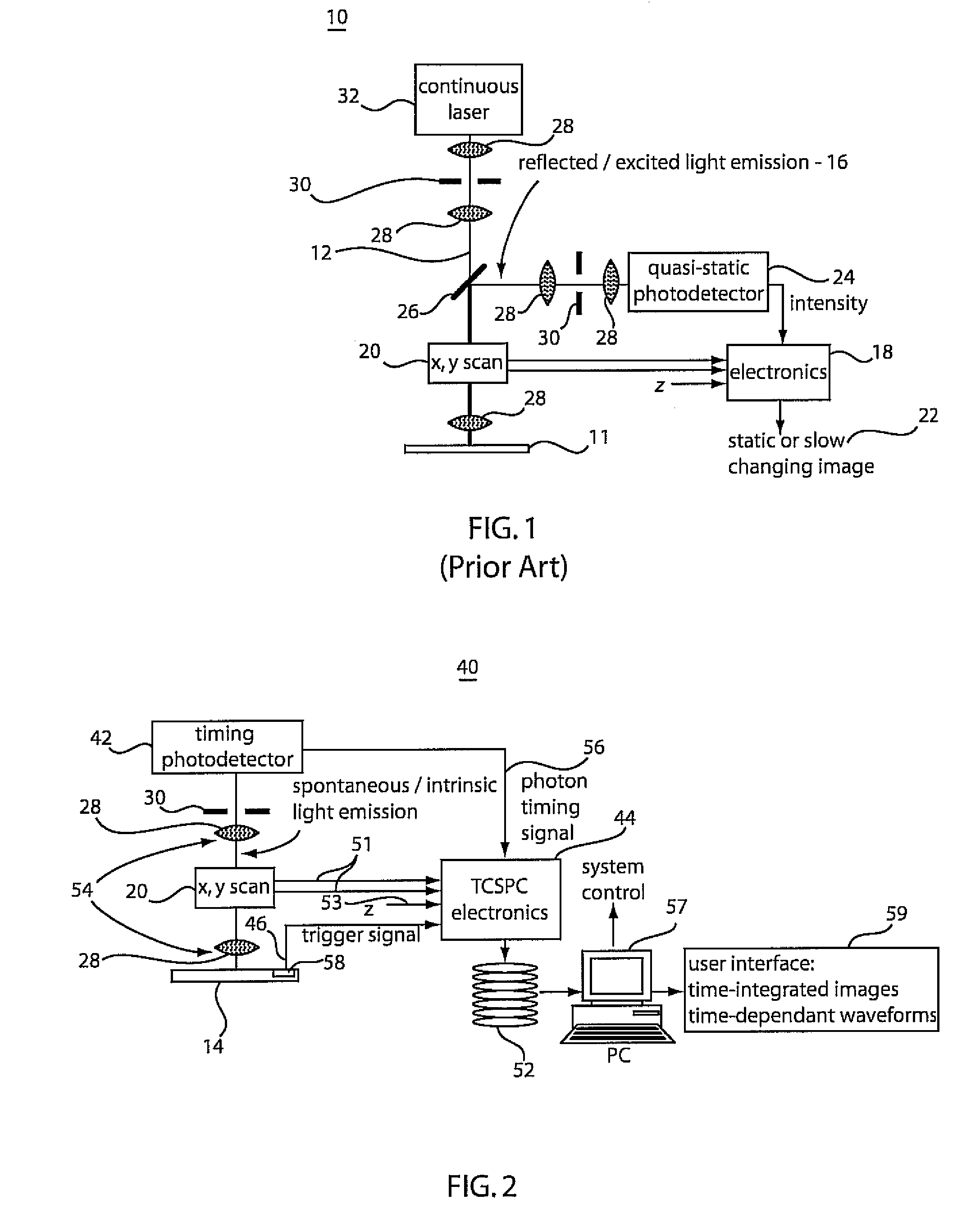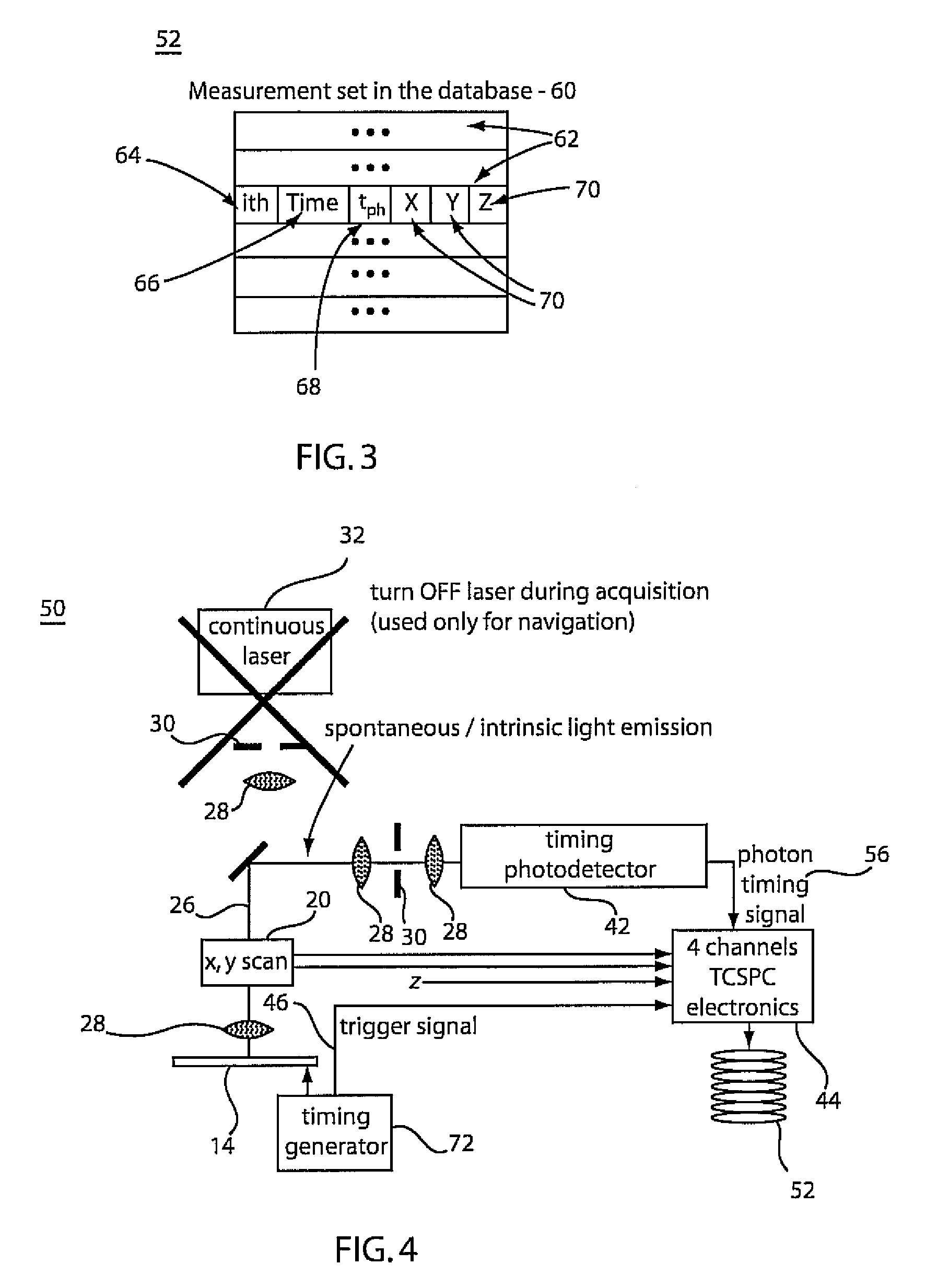Method and apparatus for creating time-resolved emission images of integrated circuits using a single-point single-photon detector and a scanning system
a scanning system and integrated circuit technology, applied in the field of imaging technology, can solve the problems of high time jitter, complicated manufacturing of even single-pixel photodetectors with low noise and low jitter, and prevent their adoption for pica measurements, etc., to achieve the effect of simplifying the interpretation of data
- Summary
- Abstract
- Description
- Claims
- Application Information
AI Technical Summary
Benefits of technology
Problems solved by technology
Method used
Image
Examples
Embodiment Construction
[0026]In accordance with present principles, methods and systems are presented to regain imaging capability for Picosecond Imaging for Circuit Analysis (PICA) while still using high-performance highly-optimized single pixel photodetectors. Instead of developing a photodetector with imaging capability but compromised performance, the focus is shifted to the use of single pixel photodetectors in a different optical system. This permits for the photodetector manufacturers to fully exploit the capability of their technology to maximize the single pixel performance, leaving the task of imaging to the optical system.
[0027]A single pixel or single point detector is a photodetector which is unable to spatially separate a photon inside the field of view or collection area. All the photons collected from a certain area / volume are spatially associated with a point.
[0028]Embodiments of the present invention can take the form of a hardware embodiment, or an embodiment including both hardware and...
PUM
| Property | Measurement | Unit |
|---|---|---|
| time resolution | aaaaa | aaaaa |
| time correlated single photon counting | aaaaa | aaaaa |
| delay time | aaaaa | aaaaa |
Abstract
Description
Claims
Application Information
 Login to View More
Login to View More - R&D
- Intellectual Property
- Life Sciences
- Materials
- Tech Scout
- Unparalleled Data Quality
- Higher Quality Content
- 60% Fewer Hallucinations
Browse by: Latest US Patents, China's latest patents, Technical Efficacy Thesaurus, Application Domain, Technology Topic, Popular Technical Reports.
© 2025 PatSnap. All rights reserved.Legal|Privacy policy|Modern Slavery Act Transparency Statement|Sitemap|About US| Contact US: help@patsnap.com



